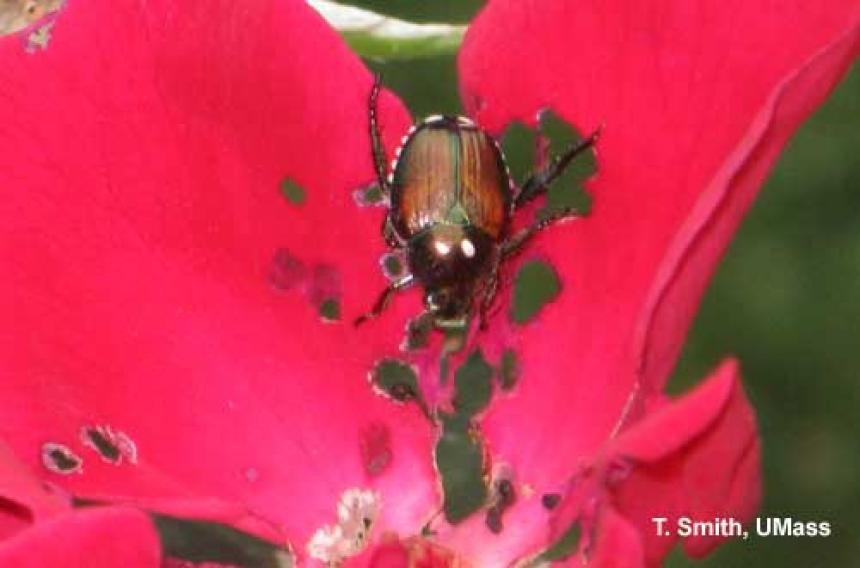Although, not a greenhouse pest, adult Japanese beetles can be found feeding on plants in outdoor retail yards, cut flower fields and home gardens. The adults are active in daylight and feed on many different kinds of plants. Japanese beetles have a one-year life cycle. Adults emerge from the soil around the last week of June to feed and mate. The females burrow into the soil to lay eggs, usually in July. Eggs hatch into grubs and begin feeding on roots of grasses and other plants. They continue to feed until the soils cool down in September. In late fall the grubs migrate downward through the soil profile, staying below the frost line throughout the winter. In the spring as the soil warms, the grubs move back into the root zone and resume feeding. The grubs pupate (still in the soil) before emerging as adults.
Contact insecticides can be applied as soon as the adult beetles are observed. Many of the contact insecticides may be harmful to bees, predatory mites and insects. Apply grub control to larvae in grassy areas surrounding the production areas.
Adults can also be easily hand-picked and dropped in a container of soapy water.
In cut flowers, managing the grub stage may not be feasible since the beetles are strong fliers and the grubs are most likely feeding elsewhere.
